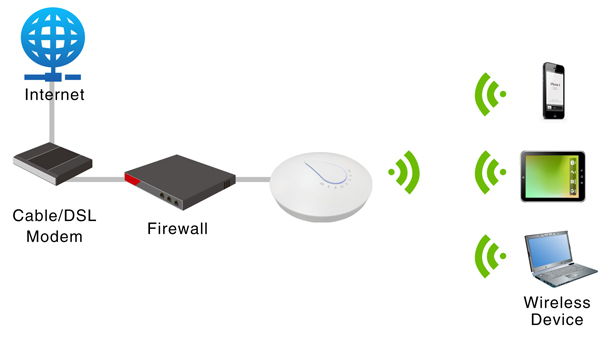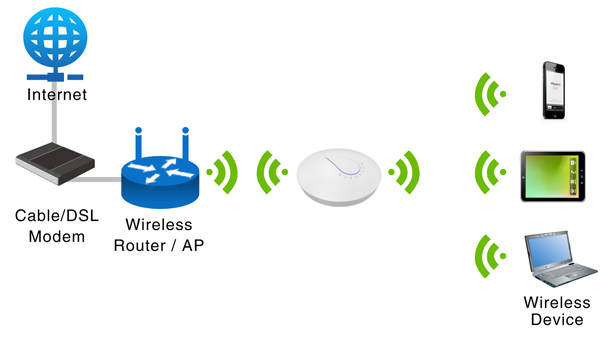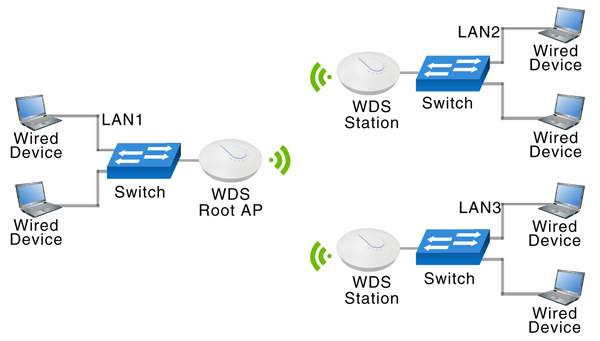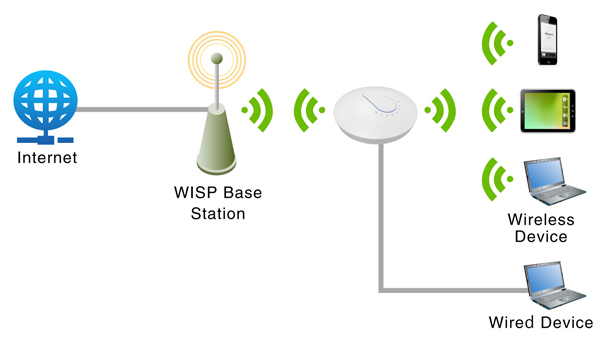Fat AP mode delivers various options for AP operation. Apart from the most widely applied AP mode, there are also Repeater mode for extending current wireless coverage to any dead spot areas, as well as WDS mode for connecting LANs at two physically separated locations and WISP Client Router mode for providing Internet access to LANs in a rural area or in the coverage of a public Wi-Fi hotspot, adding variety to your deployment decision.
Providing Wireless Signals Using AP Mode (NAP-570、NAP-250)
The AP mode is the most common approach used for establishing a wireless LAN. It converts Ethernet signals into radio signals, enabling mobile devices to access the Internet through the wired network, which is ideal for small business, SOHO, home, and other indoor sites.

Eliminating Wi-Fi Dead Spots Using Repeater Mode (NAP-570 only)
The Repeater mode eliminates dead spots and enhances weak signals by extending your current Wi-Fi coverage, efficaciously alleviating the signal issues caused by obstacles or walls (including structural and interior ones). It is widely adopted in an indoor scenario where the signal of wireless router or AP is impeded.

Connecting LANs at Different Locations Using WDS Mode (NAP-570 only)
The WDS (Wireless Distribution System) mode is subcategorized into "Root AP" and "Station" modes. It connects LANs at two (or more) physically separated locations, enabling wireless devices to communicate with each other, which is ideal for outdoor-to-indoor, building-to-building and floor-to-floor scenarios.
WDS Root Mode: Once enabled, the AP serves as a root node to connect a leaf node (i.e., LAN) in a point-to-point (P2P) fashion or multiple leaf nodes in a point-to-multipoint (P2MP) fashion.
WDS Station Mode: Once enabled, the AP serves as a leaf node to connect a root node (i.e., an AP operated in "WDS Root AP" mode) in a point-to-point (P2P) fashion.

Sharing Wi-Fi with LAN Using WISP Client Router Mode (NAP-570 only)
The WISP Client Router mode shares a subscribed (from your ISP) or free Wi-Fi signal with LAN users, saving the hassles of wiring. It is ideal for a rural area that lacks of fixed-line telecommunications infrastructure or a region that is covered by a public Wi-Fi hotspot.
